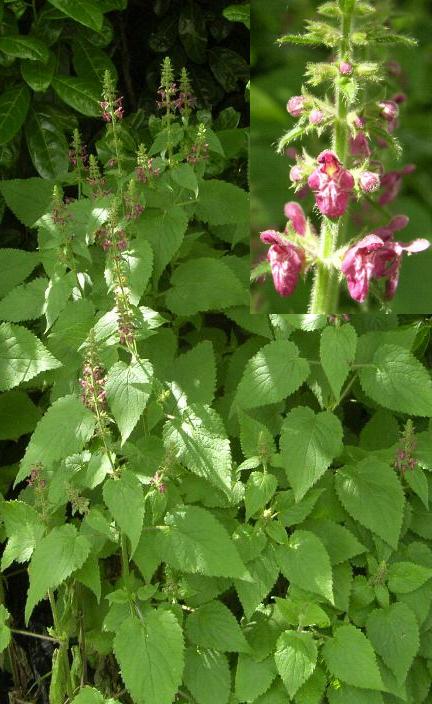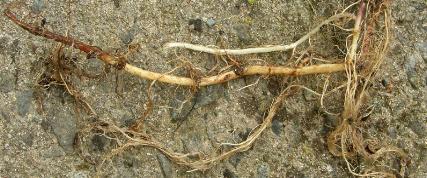Hedge WoundwortScientific Name: Stachys sylvatica |
A member of the Labiatae or Dead-nettle family, this perennial reaches about 75cm in height. It has a distinctive unpleasent smell when crushed, and although similar in looks to a nettle, it does not sting. Grows in sun or partial shade in well drained soil spreading mainly by extended rhizomes.
The velvety, dark green leaves have serrated edges, with long petioles which are about a quarter of the total length, and oppose each other on the hairy, square stem. They are an elongated heart-shape, 5 to 15 cm long and 2 to 5 cm wide with a tapered end.
Spikes of hooded flowers appear in whorls from June to October. They vary from pink to dark purple and the lower lip has paler markings.
The underground stems are shallow and easily uprooted but any remaining parts may regrow. Does not withstand repeated close cutting.
A systemic or translocated herbicide will work, eg Gylphosate.
See also Stinging Nettle and Common Hemp-nettle which have similar leaves.
A close relative Marsh Woundwort, S. palustris, can also cross pollinate with it to produce Hybrid Woundwort which is usually sterile. The main distinguishing feature is the leaves on the upper stem which have a short petiole; S. palustris leaves have no stalk and S. sylvatica leaves have a stalk that is about a quarter of their length. The feel of the hybrid leaves is closer to that of S. sylvatica.

